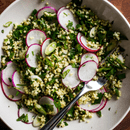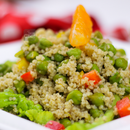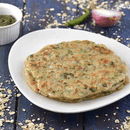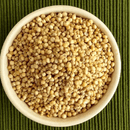Organic Whole Wheat
Wheat is a cereal grain that is a major source of food for people around the world. It is a grass species that is cultivated for its edible seeds. Wheat is a staple food in many parts of the world and is used to make bread, pasta, noodles, and other food products. It is also used to make animal feed and is an important source of nutrition for livestock. Wheat is one of the oldest cultivated crops and has been an important part of human diets for thousands of years. It is a major source of carbohydrates, proteins, and dietary fiber. It is also a source of vitamins and minerals, including thiamin, niacin, folate, and iron. Wheat is a versatile grain that can be used in a variety of dishes and cooked in many different ways.
History Of Wheat
Wheat has been cultivated for thousands of years and is one of the oldest known crops. It is believed to have originated in the Fertile Crescent region of the Middle East, where it was first domesticated around 10,000 BC. It then spread to other continents, such as Europe, Asia, and the Americas. Wheat was an important part of the diet in ancient civilizations, including the Egyptians, Greeks, and Romans. In the Middle Ages, it was a major source of nutrition for Europeans. Today, wheat is one of the most widely cultivated crops in the world and is a major source of nutrition for people in many countries.
5 Magical Benefits Of Consuming Wheat
Recipes and Methods For Consuming
1. Wheat Bread: Use whole wheat flour to make a delicious loaf of bread. Knead the dough, let it rise, and bake it in the oven for a delicious, homemade treat.
2. Wheat Cereal: Toast wheat kernels and mix with dried fruit, nuts, and seeds for a healthy breakfast cereal.
3. Wheat Crackers: Combine whole wheat flour, salt, and water to make a dough. Roll out the dough and cut it into crackers. Bake in the oven for a crunchy snack.
How much quantity should be consumed on a daily basis?
The amount of wheat that should be consumed on a daily basis depends on an individual‘s dietary needs and preferences. The recommended daily intake of whole grains, including wheat, is 6–8 ounces per day.
Best Time For Consumption
The best time to consume wheat is during the winter months when the crop is harvested. Wheat is a cool–season crop, meaning it grows best in temperatures between 45 and 75 degrees Fahrenheit. It is usually harvested in the late summer or early fall, but can be stored for months and consumed throughout the winter.
Top 4 Indian Brands Offering Certified Organic Wheat

1. Gudmom Wheat (Sharbati) 5 kg

2. ECOFRESH Wheat (Khapli)

3. 1Organic Wheat (Lokwan) 5 kg

4. ECOFRESH Wheat Sharbati
Sharbati wheat is a rich source of nutrients, including vitamins B and E. It also contains large amounts of catalytic elements, mineral salts, calcium, magnesium, potassium, manganese, zinc, iodine, and copper. Shabati flour helps the body's more than 300 enzymes use insulin and secrete glucose.










